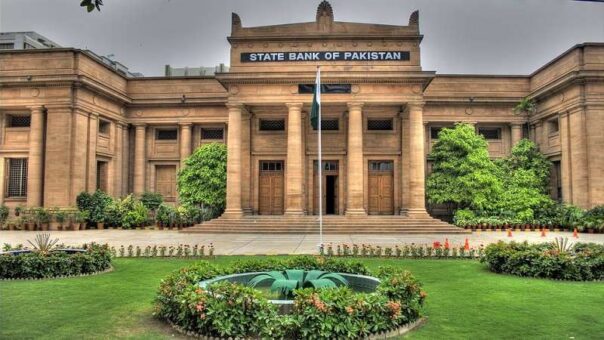Karachi, October 5, 2023 – Pakistan’s external debt has experienced a staggering 39 percent year-on-year increase in August 2023, primarily attributed to a significant depreciation of the Pakistani rupee against the US dollar during this period.
Official data released by the State Bank of Pakistan (SBP) on Thursday highlights the substantial rise in external debt, reaching Rs 24.17 trillion in August 2023, compared to Rs 17.42 trillion a year earlier.
READ MORE: Pakistan’s Foreign Exchange Reserves Decrease to $13.03 Billion
The data further reveals that the exchange rate at the end of August 2023 was recorded at USD = PKR 305.62, compared to USD = PKR 218.74 a year ago. This reflects a nearly 40 percent depreciation of the Pakistani Rupee against the US Dollar over the past year.
The total central government debt, including both domestic and external components, witnessed a significant increase of 29 percent, reaching Rs 64 trillion by August 2023, compared to Rs 49.57 trillion a year ago.
Within the central government debt category, the domestic debt of the country surged to Rs 39.80 trillion by August 2023, compared to Rs 32.15 trillion a year ago. Long-term debt, which constitutes a major portion of the domestic debt, rose to Rs 30 trillion by August 2023, compared to Rs 24.56 trillion a year earlier. This category includes permanent debt, unfunded debt, and foreign currency loans.
READ MORE: Pakistan Witnesses Massive 25% Decline in Imports During First Quarter of FY24
Meanwhile, short-term debt, another component of the public debt, also saw a substantial increase, rising to Rs 9.63 trillion by August 2023, compared to Rs 7.48 trillion a year ago. Within the short-term debt category, the government’s borrowing from the banking system through the sale of treasury bills increased to Rs 9.56 trillion, up from Rs 7.43 trillion a year ago.
The rise in domestic debt can be attributed in part to the central bank’s maintenance of record-high interest rates. Currently, the benchmark interest rate stands at 22 percent.
The surge in external and domestic debt poses challenges to Pakistan’s fiscal stability, with a notable impact on the country’s economic outlook. The depreciation of the rupee, in particular, underscores the importance of managing exchange rate risks and implementing policies to stabilize the currency.
READ MORE: Inflation in Pakistan Surges to 31.4% in September 2023
As Pakistan grapples with these economic challenges, policymakers will need to carefully assess their debt management strategies, explore avenues to enhance economic growth, and address fiscal deficits to ensure the country’s financial stability in the future.
